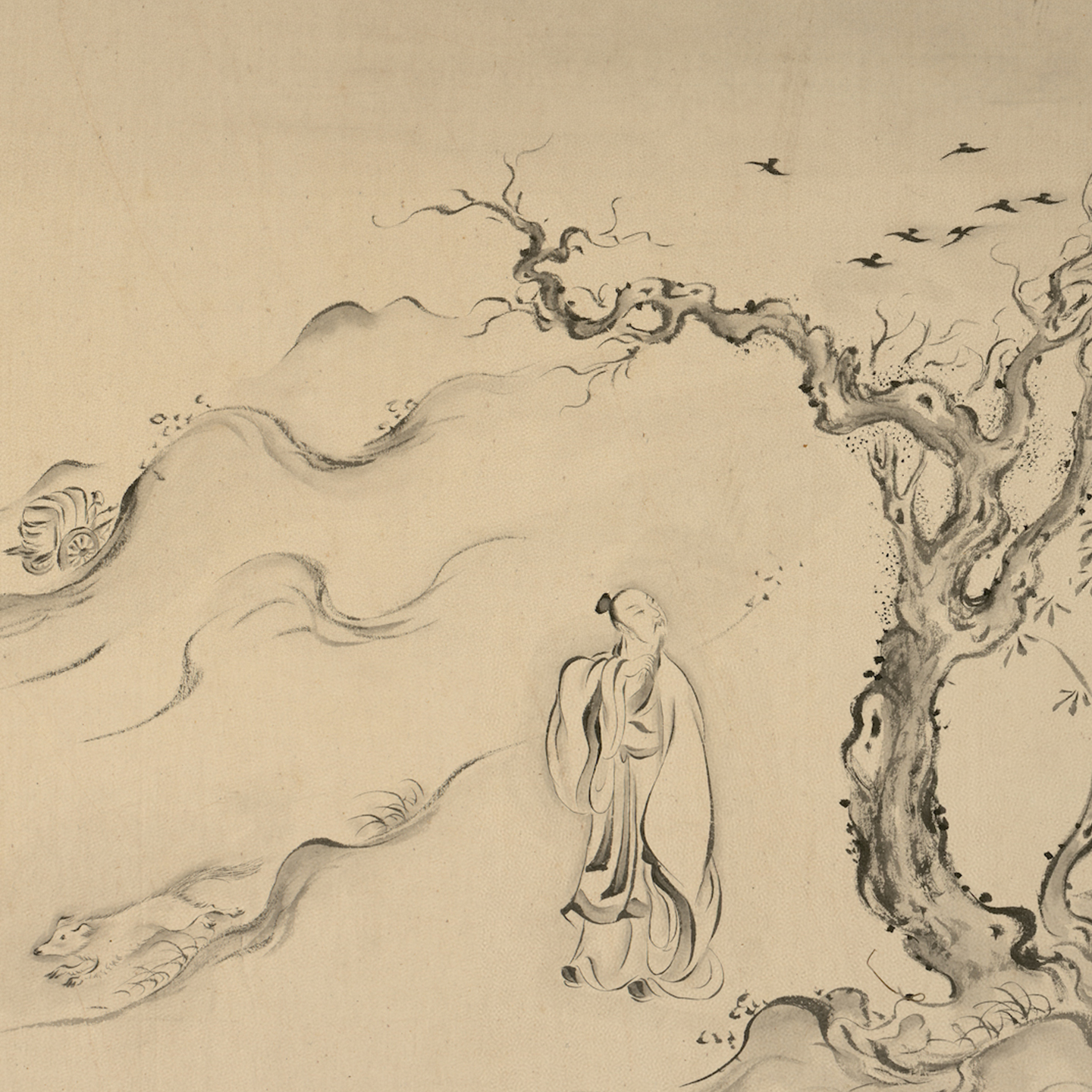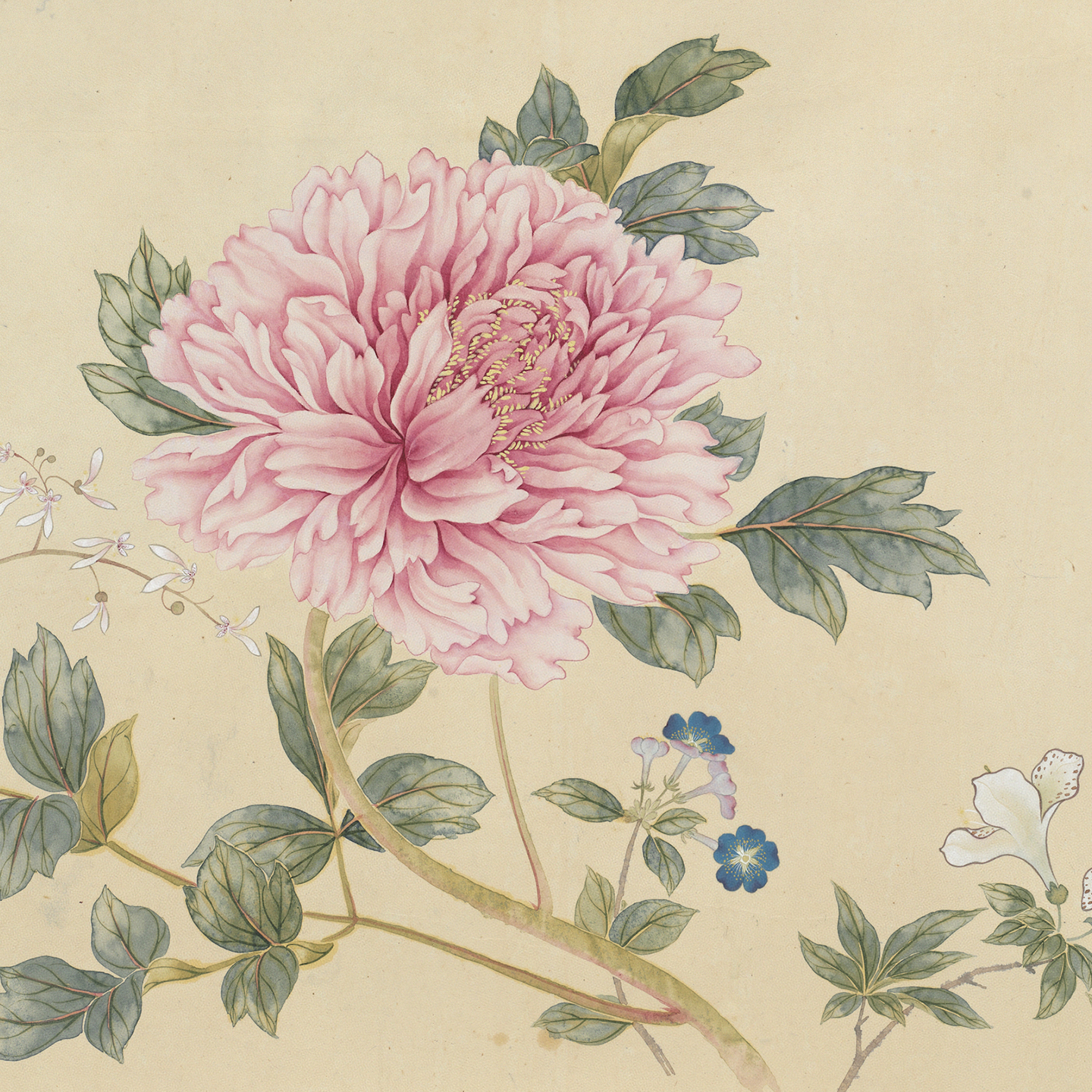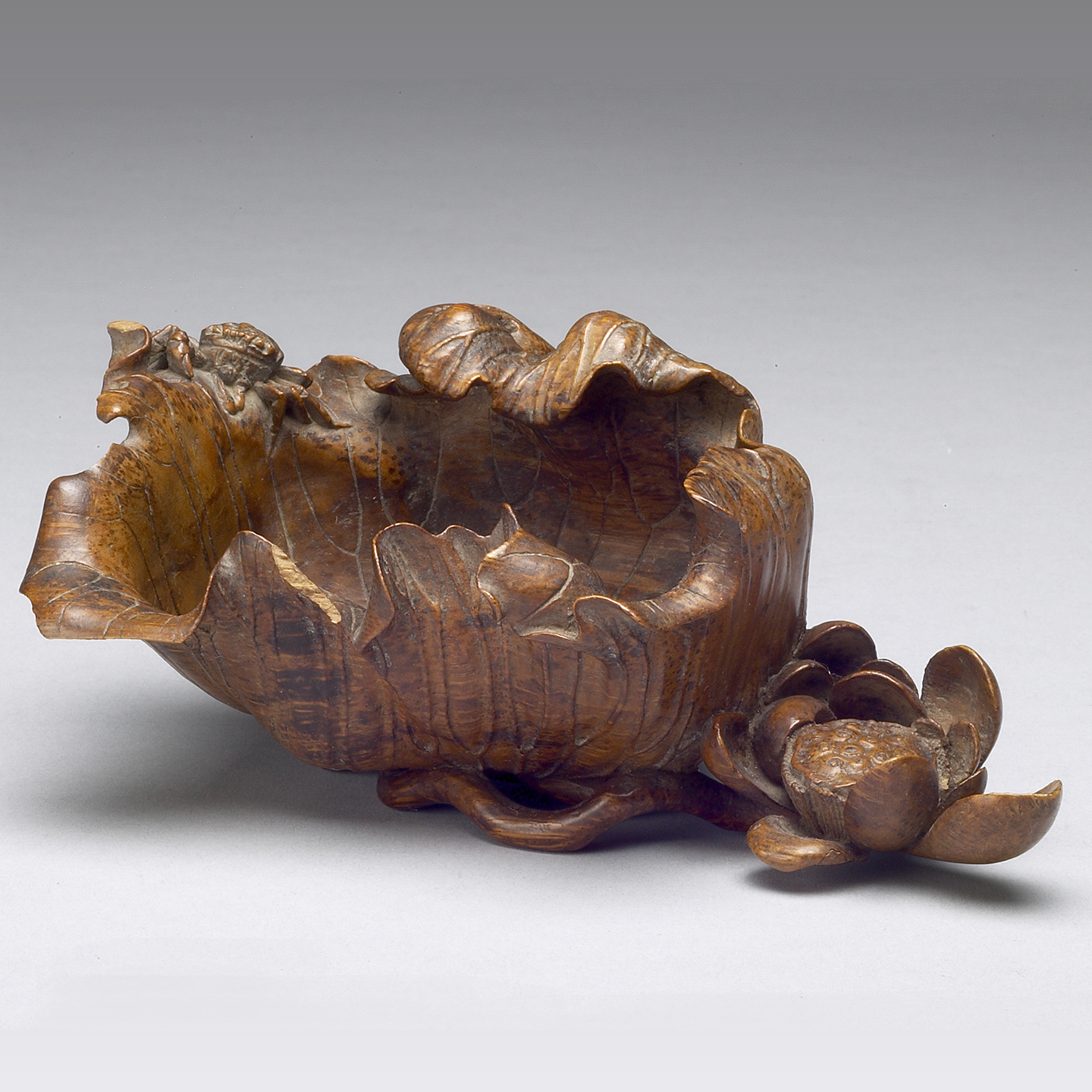Changes in nature can often be divided into four distinct times known as the seasons, our lives progressing with and nourished by these regular cyclic phases. Besides the four seasons of spring, summer, fall, and winter, the ancient Chinese also formulated more detailed divisions of annual changes in weather to create 24 solar terms, which were integrated into the agricultural calendar to reflect the work of farmers throughout the year, such as tilling in spring, weeding in summer, harvesting in fall, and storing for the winter. From the seasonal cycle of nature, the ancients thereby learned how to grow and prepare foods to nourish the body and prolong life. In terms of the visual arts, the seasons became associated with certain natural phenomena, such as abundant rains in spring, hazy clouds in summer, the bright moon of autumn, and barren mountains of winter, creating a cycle of landscape painting as well. In turn, some plants also came to stand for certain seasons, such as the plum blossom for winter, orchid for spring, bamboo for summer, and chrysanthemum for autumn, serving as common symbols of cyclical change in nature. In addition, court painters adapted flora and fauna of the seasons from classical texts to express the character of Nature, reminding the ruler to observe and follow the sequence of time to maintain harmony and bring peace and prosperity to the country.
The Classic of Poetry from
the Imperial Brush with Illustrations
- Gaozong (1711-1799), Qing dynasty
- Manuscript edition from the brush of Gaozong,
Qianlong reign (1736-1795), Qing dynasty - Text: 30.2 x 39.6 cm
- Book: 43.5 x 43 cm
The full title of this illustrated book is The Classic of Poetry from the Imperial Brush with Complete Illustrations Combining Painting and Calligraphy. In it, the Qianlong emperor (Gaozong) transcribed 310 writings from
The Classic of Poetry in four script types: regular, cursive, seal, and clerical. He also ordered court artists to imitate the
"Illustrated Classic of Poetry" by Ma Hezhi of the Southern Song and complement it with ink drawings. The texts and images from the brush express relationships between man and nature.
The Classic of Poetry is the oldest collection of songs and poems in China, representing an anthology of folk and court poetry dating from the Western Zhou to middle Spring and Autumn period. The poems deal with a variety of natural phenomena, including flowers, plants and animals, and the seasons, as well as the human world, such as subtle expressions of love and ideas on life. Even Confucius once described this text as
"having no depraved thoughts." The poetry covers a range of subjects, including self-cultivation, maintaining a household, ruling a country, and important criteria for the land.
Spring Fortune Collected in a Brocade
- Wang Chengpei (?-1805), Qing dynasty
- Handscroll, ink and colors on paper, 42 x 778.8 cm
Wang Chengpei (style name Chunnong), a native of Qiantang in Zhejiang originally from Xiuning in Anhui, was the son of Wang Youdun (1692-1758), an important Qing dynasty poet-official in the reign of the Qianlong emperor. He became a Provincial Graduate in 1747 and did painting and calligraphy for the inner court, most of his works on the subject of flowers.
This painting depicts more than forty kinds of flowers, including plum blossoms and narcissi of late winter and early spring, the lotus in summer, and chrysanthemums of autumn. This representation of flowers from the four seasons in a long handscroll also conveys the auspicious meaning of longevity in a life that never ends. The flowers are skillfully deployed across the surface of the handscroll with numerous blank spaces, the artist perhaps intentionally leaving room for the viewer(s) to write poems of praise in response. The method of rendering throughout is beautiful and elegant, the colors opulent yet pure, making this a masterpiece of flower painting in the handscroll format.
Carved bamboo brush washer
in the form of a lotus leaf
- "Sansong" mark, early Qing dynasty (ca. 17th century)
- Height: 6.4 cm, length: 15.3 cm, width: 7.9 cm
This brush washer carved from a bamboo root is in the form of a lotus leaf, its edges curling and naturalistic with insect holes. A small crab also rests on it. To the side is a lotus blossom already opened, its stem and leaves twisting round the base to serve as a support. On the outer wall of the lotus leaf is an engraved inscription in running script for
"Made by Sansong." It refers to Zhu
Sansong (fl. ca. 1573–1619), founder of
a famous family of carvers known as the
"Three Zhus of Jiading."
The carving of this piece is exquisite, with every detail from the veins to the minute rendering of the lotus petals exacting. The quality of the work expresses the idea of lotuses
"leisurely opening and closing in accord with Nature." It therefore demonstrates that the carver had carefully observed how the lotus grows and blooms, making him able to convey the lyricism of how
"blossoms and leaves grow in harmony, the green fades and the pink falls in sorrow." This carving suggests the corner of a lotus pond in summer at the moment of a gentle breeze.



